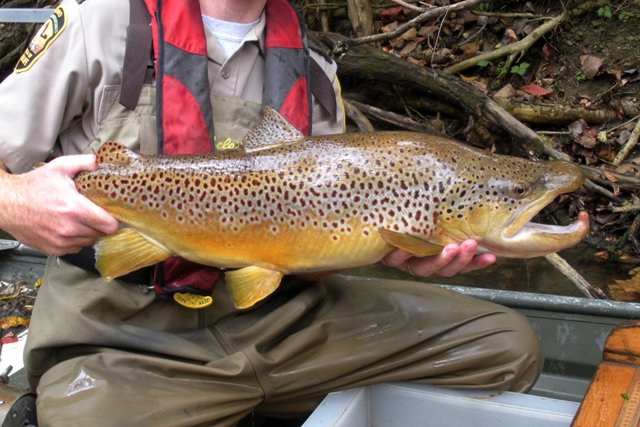Brown Trout
(Salmo trutta)

The brown trout is a popular sport fish, however they are an introduced species. They can tolerate warmer temperatures and lower oxygen levels than other trout species. This allows them to use a wider range of habitats where they sometimes out compete native trout and other native fish species.
Description
Brown trout are brown to gold on their back with a cream to slate-colored belly. Most fish have black, gray, yellow, and occasionally red spots all surrounded by a white halo. This species has a prominent spotted adipose fin between the dorsal and caudal fin. There are no spots on the squarish tail or vermiculation on the back.
Habitat and Habits
Brown trout are native to Europe, but were introduced to North America before the turn of the century. They prefer cold water with temperatures ranging up to 79 F°. Preferred habitat includes areas of boulders, cobble, logs, rootwads and overhead cover. Brown trout will feed in riffles containing rock as small as gravel.
Reproduction and Care of the Young
Brown trout generally do not reproduce successfully in Ohio, but in nature they spawn over gravel or cobble substrates in moving water from late September to early November. Division of Wildlife hatcheries rear brown trout for one year (six to seven inches) before stocking them.